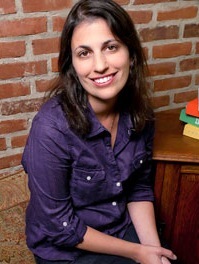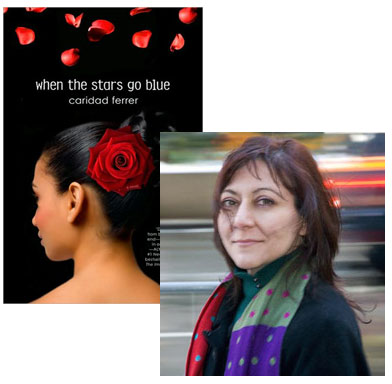Ariella Papa’s Holiday Gift Suggestion
It had been a while since I’d heard from Ariella Papa, who I first met a few years back when she was part of Harlequin’s band of “chick lit” novelists publishing under the Red Dress Ink imprint, when I ran into her at the Little Women horror mashup reading last spring, but I’m glad she’s stayed in touch since. She’s just come out with a new novel called Momfriends, about a trio of New York City women, each coping with a unique set of parenting and relationship diificulties—and it’s great to see she hasn’t lost her knack for getting inside a character’s head. Like many authors these days, she’s selling this new novel exclusively as an e-book; you can learn more about it (and her earlier books!) by visiting her website. Meanwhile, if you’re still looking for a gift idea for somebody this week, Ariella’s got a great suggestion…

When I give someone a book as a gift I want it to be a transformative experience that in no way resembles their real life. I don’t want the recipient to feel I am trying to imply anything or impose my style on them. I just want to give a good read, baggage free. The Poisonwood Bible by Barbara Kingsolver works for everyone from my babysitter to my oldest friend to my brother-in-law. This book is epic. Through emotional turmoil and political unrest, we follow the Price family for over thirty years starting in 1959 when they begin their Christian mission in the Belgian Congo. What I love most is the way the novel is narrated by the five women in the family. Kingsolver creates five distinct characters and lets these strong -somewhat flawed-people make a case for themselves and their actions. Each woman has a unique response to Africa and her situation. I am in awe of Kingsolver’s mastery of voice. I was inspired by her style. It’s a crowd pleaser.
20 December 2010 | gift ideas |
Caridad Ferrer’s All-Too-Timely Ballet Novel

Earlier this week, a friend of mine on Twitter mentioned a link to an essay at BlogHer.com about how the ballet critic for the New York Times had been making cracks about ballerinas’ body shapes, and the incredibly lame defense he’d offered for doing so after the initial protests: “If you want to make your appearance irrelevant to criticism,” he wrote, “do not choose ballet as a career.” (Right: It’s not about the moves, it’s about whether you look right making them. Sure.)
As the discussion about the article continued, my friend Caridad Ferrer observed that this controversy provided much of the emotional fuel for her new novel, When the Stars Go Blue, about a recent high school graduate and aspiring ballerina who takes a detour through the drum and bugle corps when an opportunity to play Carmen arises. I figured Caridad had a lot more to say about this than you could fit into a 140-character tweet, so I invited her to write an essay for Beatrice…
Alistair Macaulay is an unmitigated jackass.
Okay, had to state that right off the bat. Just get it out there. Sadly, however, he’s an unmitigated jackass to whom I owe something of a debt and believe me when I say, I wish that wasn’t the case.
Right now, you’re probably wondering “Who?” and “Why?”
Alistair Macaulay happens to be the ballet critic for The New York Times. As to why I owe him a debt—well, it’s because his recent critique of the New York City Ballet’s holiday production of The Nutcracker (as choreographed by George Balanchine) provided a timely reinforcement of a plotline from When the Stars Go Blue. My lead character, Soledad Reyes, is a dancer. About to graduate from an elite high school for the arts in Miami, she has aspirations to become a professional—her focus primarily on ballet—even though she knows the odds are stacked against her, even more so than they would be for anyone desiring a career in such a demanding profession. Because, you see, Soledad is what one might consider a non-traditionally sized ballerina.
17 December 2010 | guest authors |

 Our Endless and Proper Work is my new book with Belt Publishing about starting (and sticking to) a productive writing practice.
Our Endless and Proper Work is my new book with Belt Publishing about starting (and sticking to) a productive writing practice. 
